Jewelweed (Impatiens capensisis) is a beautiful annual plant native to North America. As a medicinal herb, it became popular among many eastern tribes as a treatment for poison ivy and different skin conditions.
Many tribes of the Appalachian area, including the Potawatomi and Powhatan, used jewelweed topically for all types of skin aliments, including skin rashes, wounds and bug bites. The Cherokee were said to have used this amazing plant for burn dressings and treating gastrointestinal disorders.
Widely used as a poison ivy preventive, many tribes would rub the juice of the stems on their skin before entering poison vine invaded areas. This was said to protect the skin from the irritating oil urushiol that poison plants produce.
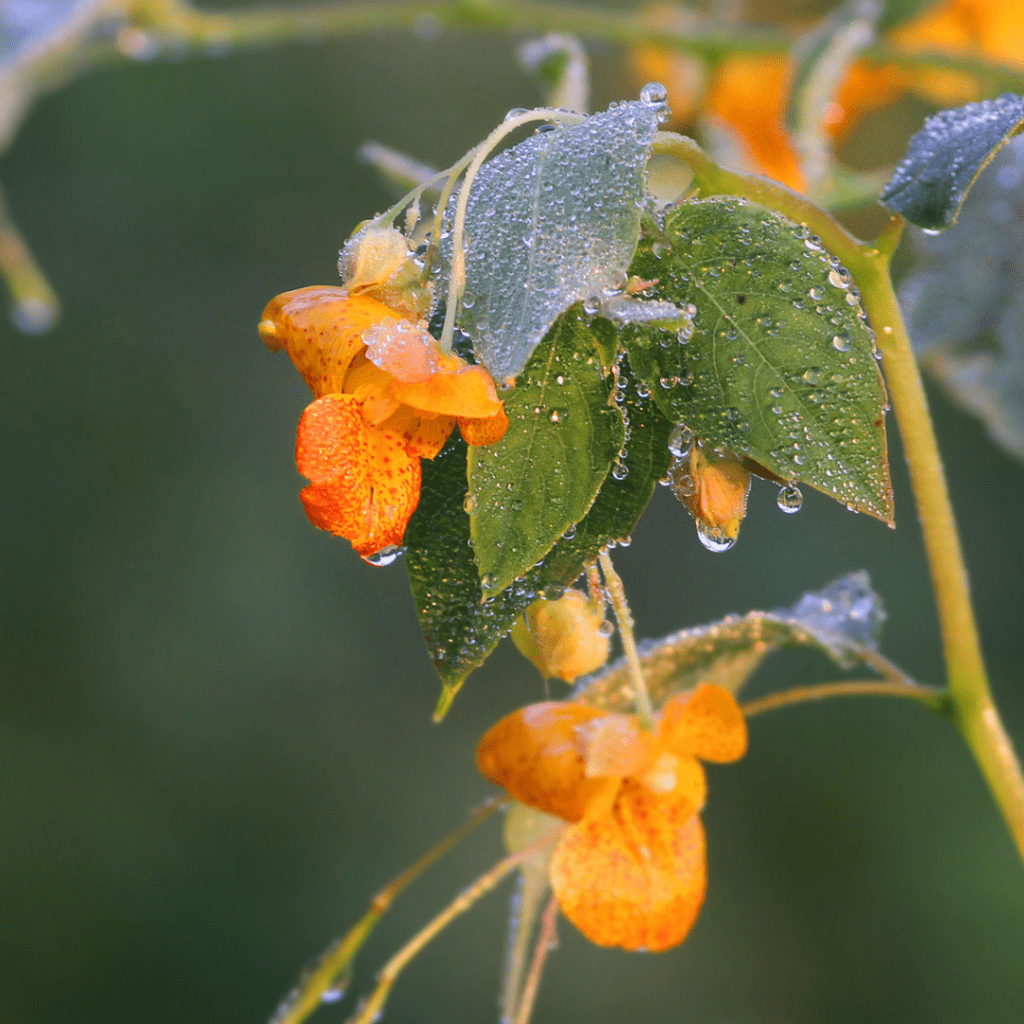
The name Jewelweed is believed to have come when people witnessed, in the moonlight or early morning sun, the silver color on the leaves, would sparkle and glisten like a jewel when wet.
Today, jewelweed is still proving to be an amazing valuable plant. It remains the number one natural treatment for all poison ivy issues.
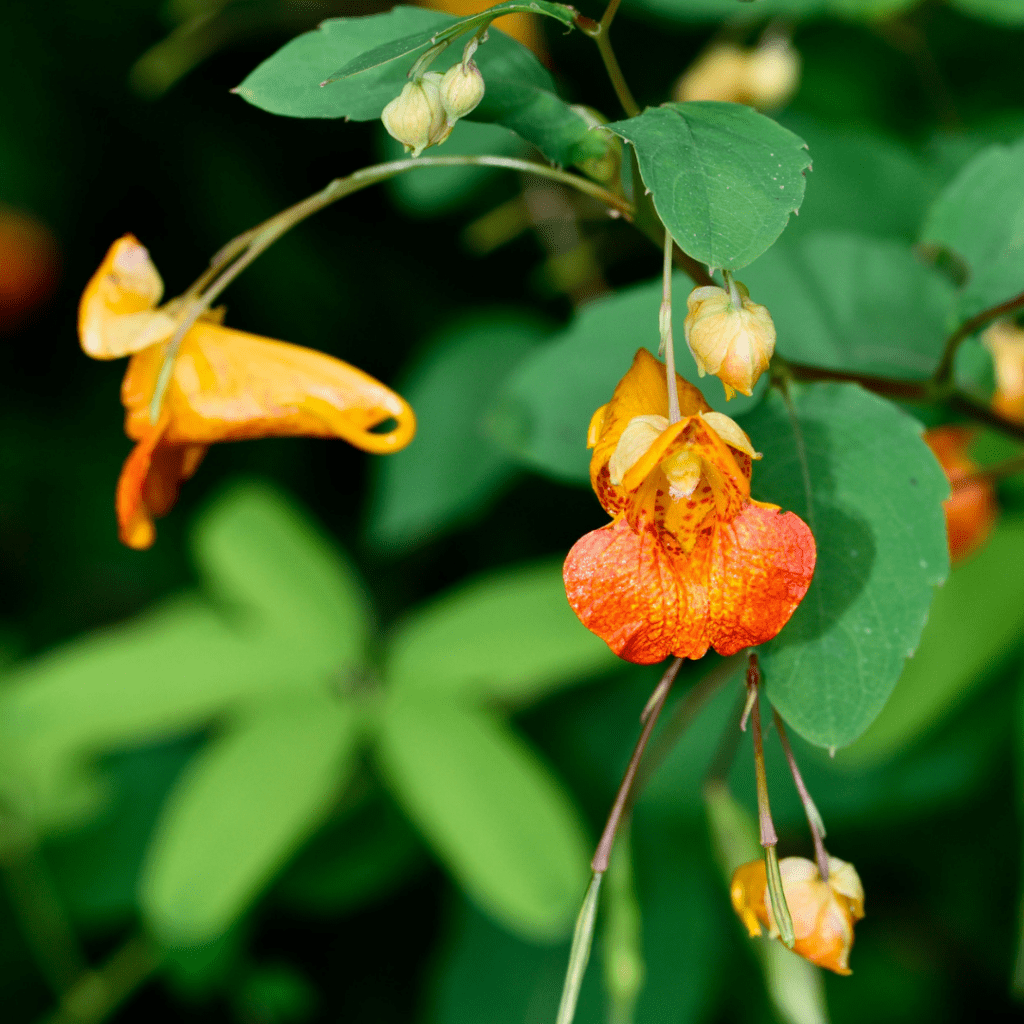
Variations and specifics
Jewelweed comes from the plant family Balsaminaceae “Genus Impatiens”. The most common variation in jewelweed is the spotted orange (Impatiens Capensis). This is the variety is the most commonly used by herbalist providing the most medical properties. This version prefers partially shaded and moist soil. Its usually found in wetland areas, near streams or floodplains.
It usually grows in numbers and provides food and habitat for a wide variety of wildlife including insects and hummingbirds.
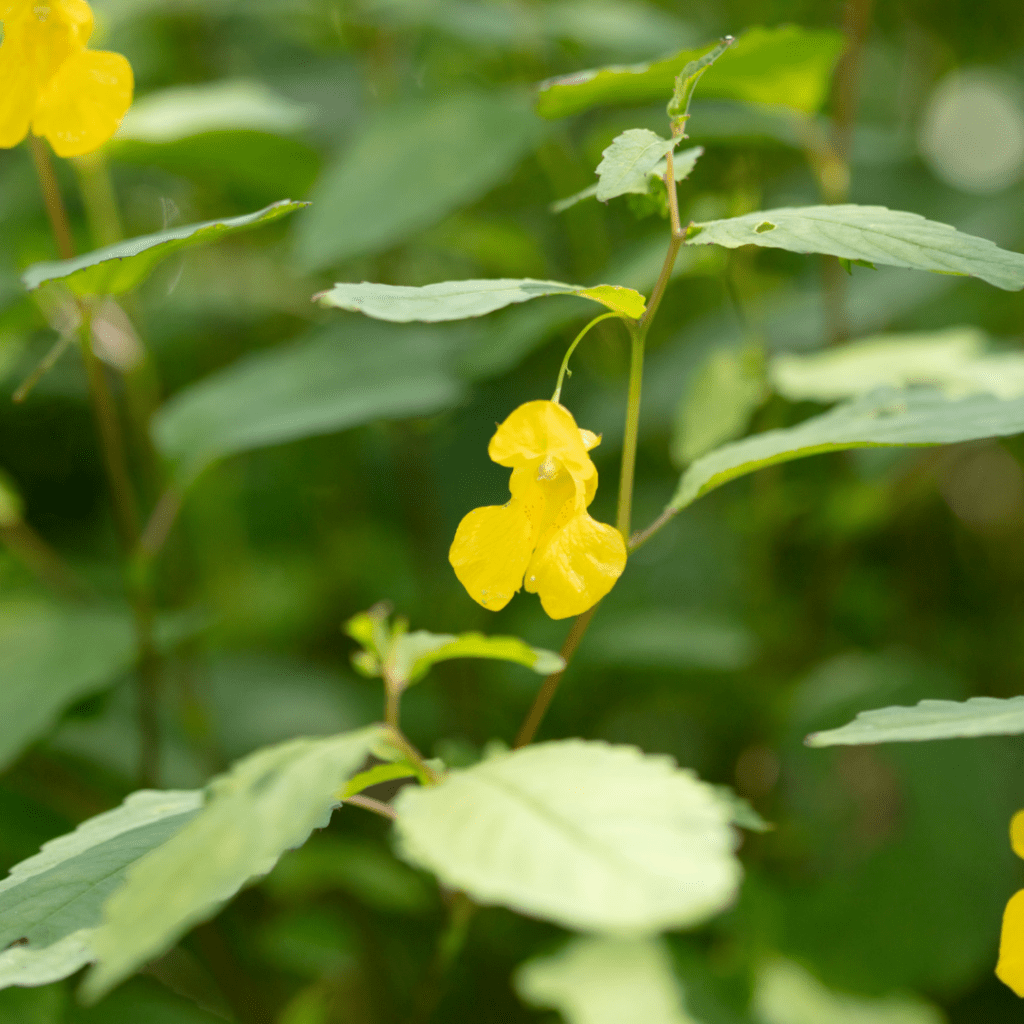
The pale jewelweed, or yellow jewelweed (Impatiens Pallida) is less common than its orange cousin, and prefers limestone sites to grow its best. Both varieties grow between 2 and 5 ft tall, with course jagged edge leaves and thick stems. The underneath of the leaves have a silver color, making them shine with jewel-like color when wet from rain or morning dew, and hit by sunlight. Jewelweed is commonly grown in most of the USA with the exception of Wyoming, Montana and the southwest including California.
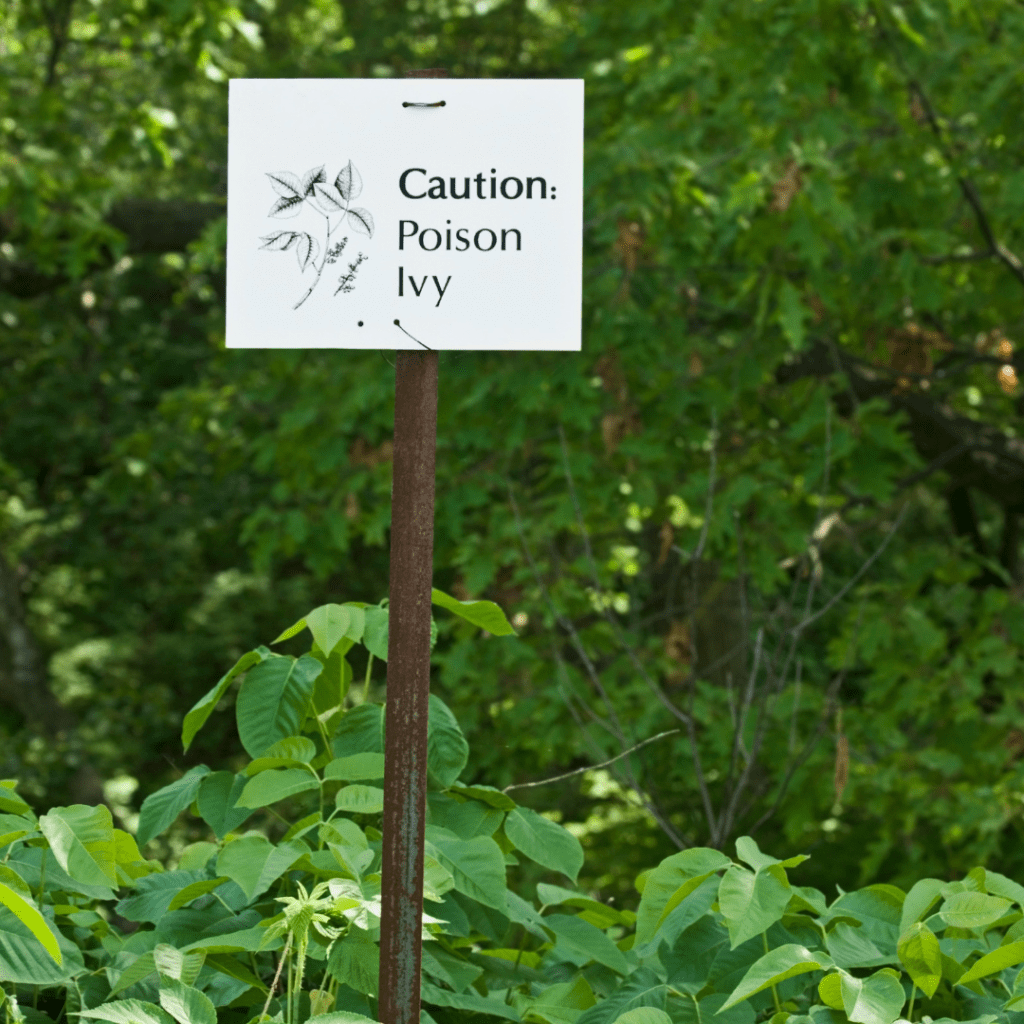
Jewelweed is usually found growing near stinging nettle and poison ivy, as it is nature’s remedy for these plants. It flowers between June and August, with orange or yellow small tube flowers. Because jewelweed is a self seeding annual, it forms a seed pod, and are often called touch-me-nots as the seed pod will explode when touched.

Medicinal properties
Jewelweed is most famous for being a natural remedy for poison ivy.
The leaves, roots and stems of this plant, contain a compound called lawsone, which is considered to have anti-inflammatory, antifungal and antihistamine actions. With these components, it puts up a great defense to the urushiol, the compound in poison ivy plants that causes inflammation.
Jewelweed is known to stop an itch, and cut healing time from poison plant reactions. The antihistamine properties of this plant are also said to stop the itch and burn from various other ailments as well including;
~ Bug bites
~ Hives,
~ Bee stings
~ Chiggers
~ Burns from stinging nettle
Since jewelweed has anti-fungal properties it has been used in washes to treat athletes foot and dandruff.
Research suggests jewelweed has a positive effect on conditions such as psoriasis and eczema, and the most recent study done by Wilkes University has found anti-cancer and antimicrobial properties in the Jewelweed.
This is an amazing forgotten plant, that is coming back into the spotlight. The more studies that are conducted, the more jewelweed will prove to be valuable medicine, that should now remain in the spotlight!
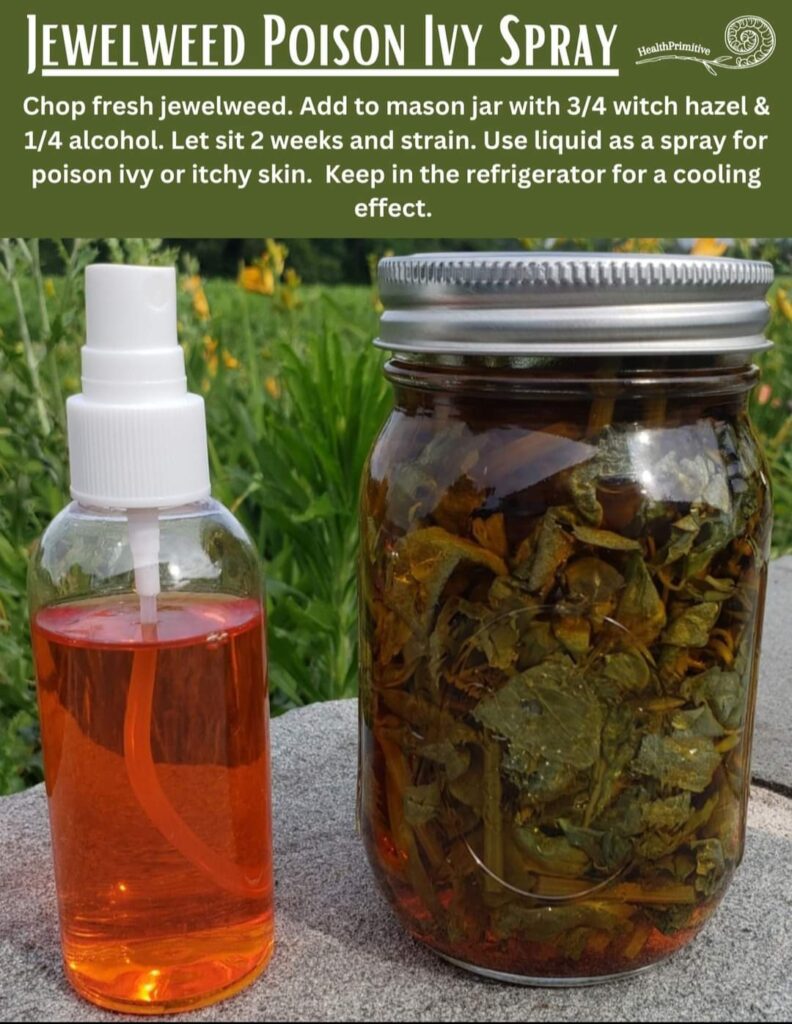
Uses
Fresh: Jewelweed can be used in its fresh state, right off the trail. Breaking off a piece of the stem and rubbing the juice or wetness directly on any kind of rash, can immediately stop an itch. If you happen to accidentally touch poison ivy while outdoors, you can use the fresh juice from the stem, and apply directly to that area. In most cases it will prevent the rash from forming.
Relief Spray: Many people prefer making a spray out of the fresh jewelweed juice. It can be placed in the fridge and sprayed when needed, for cooling, instant relief. To make the spray you will need
~ Quart mason jar
~ 1-2 cups puree jewelweed (I blend stems, leaves and roots in food processor until liquid type of consistency)
~ 2 cups witch-hazel
~ Alcohol like vodka (optional)
~ Spray bottle
~ Essential oils of choice (optional)
Fill your mason jar with your jewelweed puree about half way. Then finish filling with witch-hazel. If you choose to use alcohol, add about 1/4 cup. Let infuse in a sunny windowsill for 1-2 weeks. When ready, strain liquid using a cheese cloth and strainer, and place in a spray bottle. Mix should be kept refrigerated to prevent spoiling, and to enhance a cooling effect when applied. Can be applied as needed.
Salve: Jewelweed can be wild-crafted and made into a salve, but first it must be dried. The plant itself is thick and full of liquid so it is recommended to dry jewelweed in a controlled environment. This can also be challenging because of the high water content. If the jewelweed is not dried fast enough, it could mold in the process. Make sure your herbs are mold free before you proceed.
Making a salve is extremely easy. Follow my instructions here.
Don’t wanna make your own? HealthPrimitive has you covered. Purchase our jewelweed salve here.
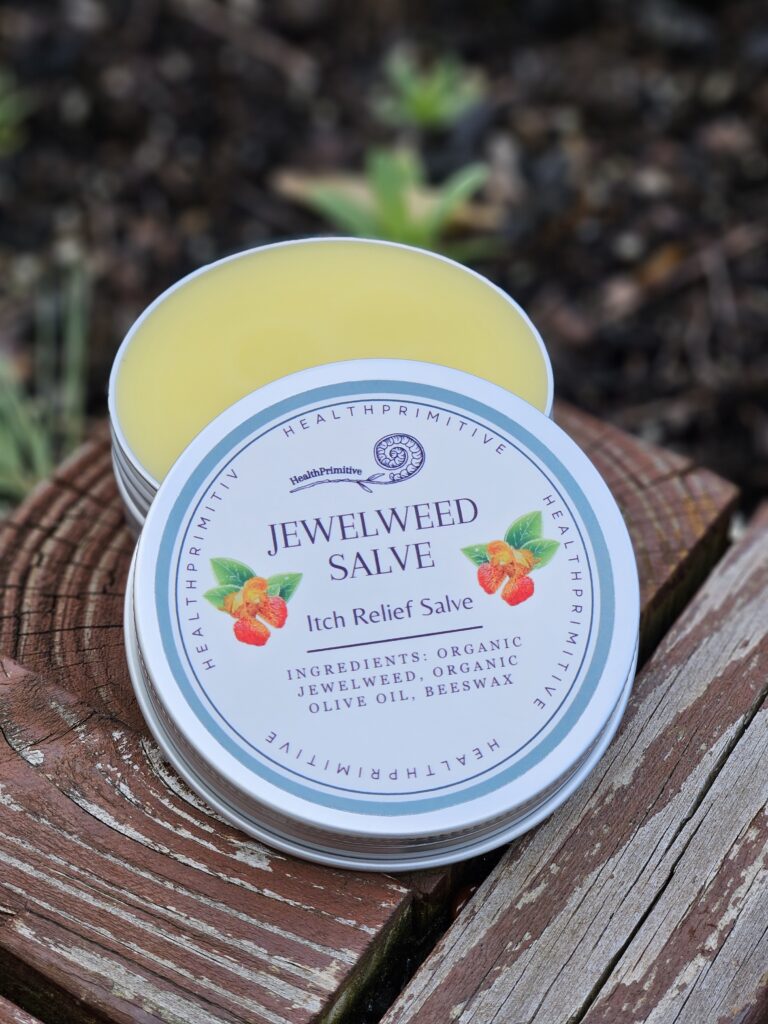
Jewelweed Ice: Having a rash from poison ivy is absolutely miserable. The red, itch and puffiness is caused from inflammation and a response of your own immune system. One way to help cool this irritation is to make jewelweed ice cubes and apply to rash.
What you will need
~ 2 ice cube trays
~ Water
~ 2 cups of witch hazel
~2 cups of jewelweed puree ( blend fresh leaves, stems, and roots in food processor into a liquid consistency)
Mix ingredients, adding water if needed, and poor into ice cube trays. Store in frezzer until needed.
Ice cubes can be applied directly to a poison rash, to help stop the itch and cool the inflammation. A great hack for any summertime itch.
Soap: Jewelweed soap is a popular way to use this plant. You can use the soap immediately after exposure to poison ivy to help prevent the rash. You can also use it to help relieve itching and inflammation from any existing rash.
The easiest way to make jewelweed soap is to infuse your soap oils with jewelweed first. Then proceed with your soap recipe using this oil. In this case, the jewelweed must be dried.
If you’ve never made an herbal infused oil, follow my instructions here.
Folklore tea: Many Native American tribes believed that drinking a cup of jewelweed tea in the early fall would prevent them from getting poison ivy the following season. This has not been scientifically proven, and the FDA recommends that you do not consume jewelweed. However, many old timers still pick fresh, young leaves of the jewelweed plant, and eat them as fresh greens, and use in tea.
We advise that you do not attempt this unless you are under the supervision of your health care provider or a trained herbalist. Jewelweed is a safe herb with no know side effects as long as used topically. Consumption of jewelweed can sometimes lead to diarrhea, abdominal pain, and vomiting.
Always talk to your health care provider before starting herbal therapies of any kind, topically or internally, especially if you are taking medication or have health concerns. View our disclaimer here.
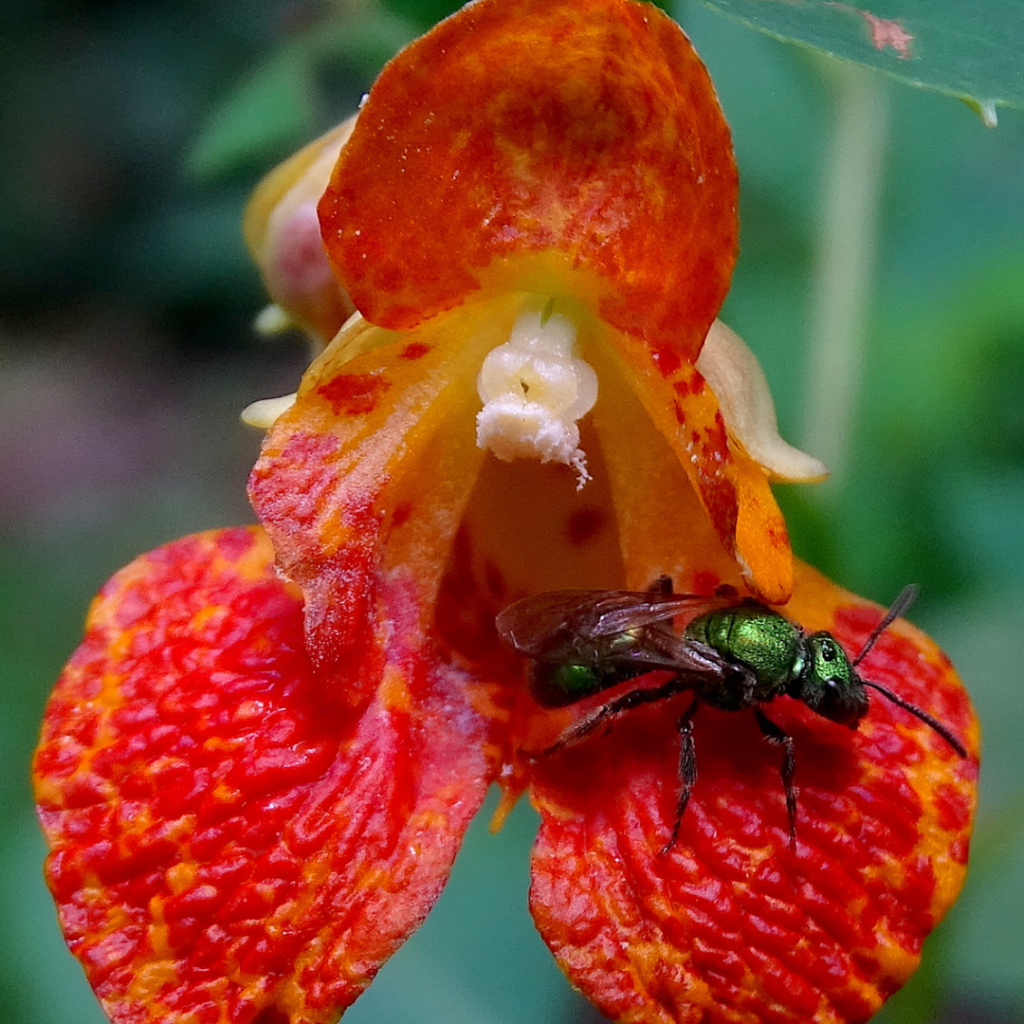
Final thought
This amazing plant has been valued for thousands years, for its ability to treat many skin irritations and ailments. It still grows alongside many creek banks and shaded forest, along-side its rivals, poison ivy and stinging nettle. The next time you catch a case of poison ivy, remember this plant, it won’t let you down.
Stay Wild
Sources Below
https://pubmed.ncbi.nlm.nih.gov/22766473/
https://www.fs.usda.gov/wildflowers/plant-of-the-week/impatiens_capensis.shtml#:~:text=Jewelweed%20has%20a%20long%20history,other%20skin%20sores%20and%20irritations.
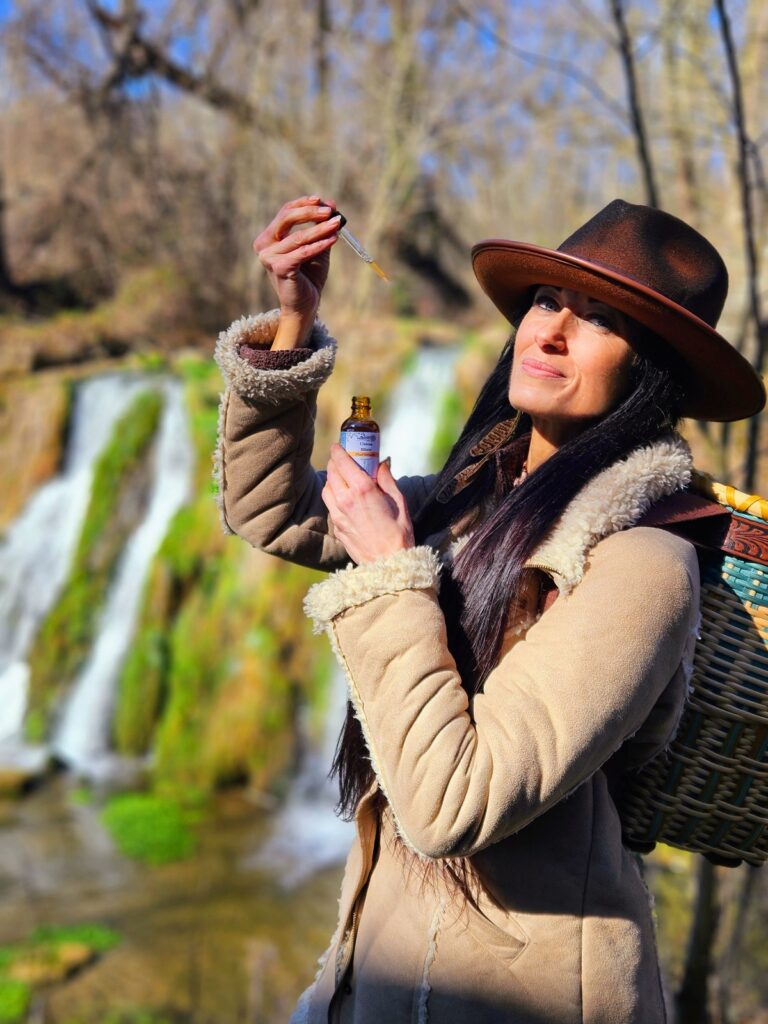
Kayce Heister
Kayce is a Clinical Herbalist, Naturopathic Practitioner (HHP), Active Forager, Wild Food Chef and Mother of three. She has spent the last 20 years practicing herbalism and natural health, and spends most of her time educating others on the amazing potential the natural world can offer.